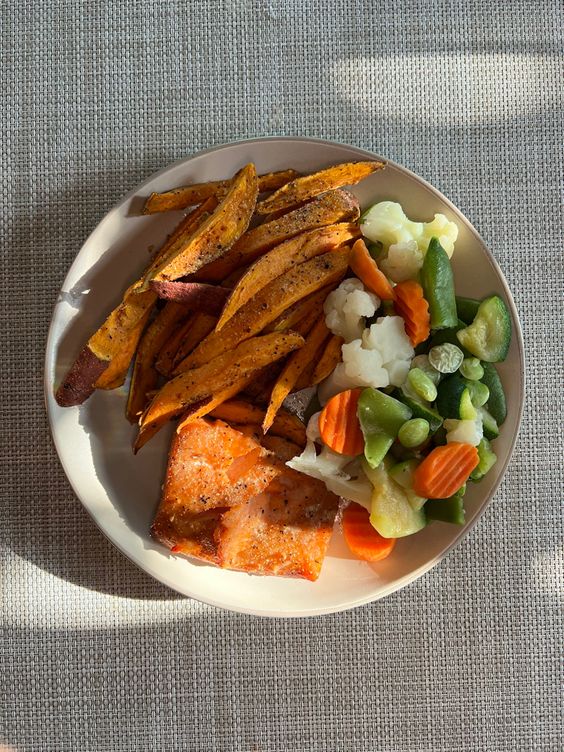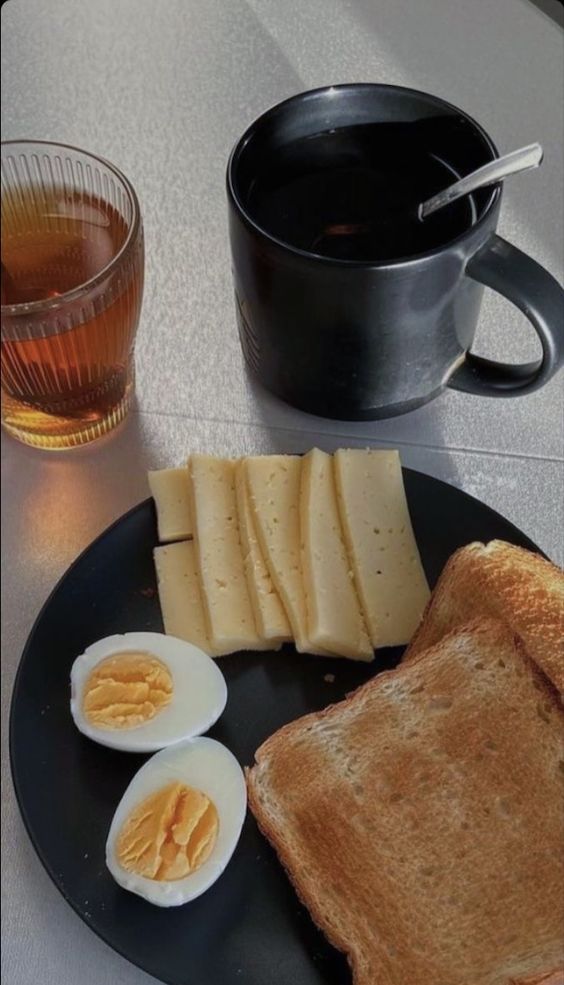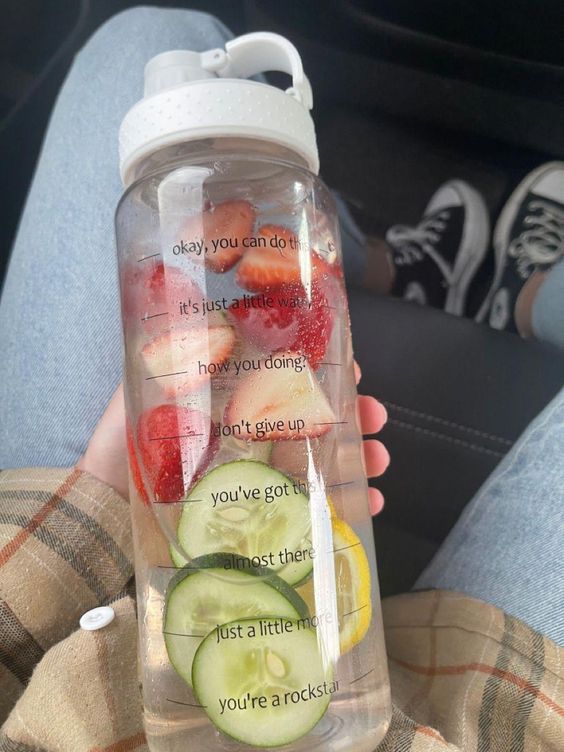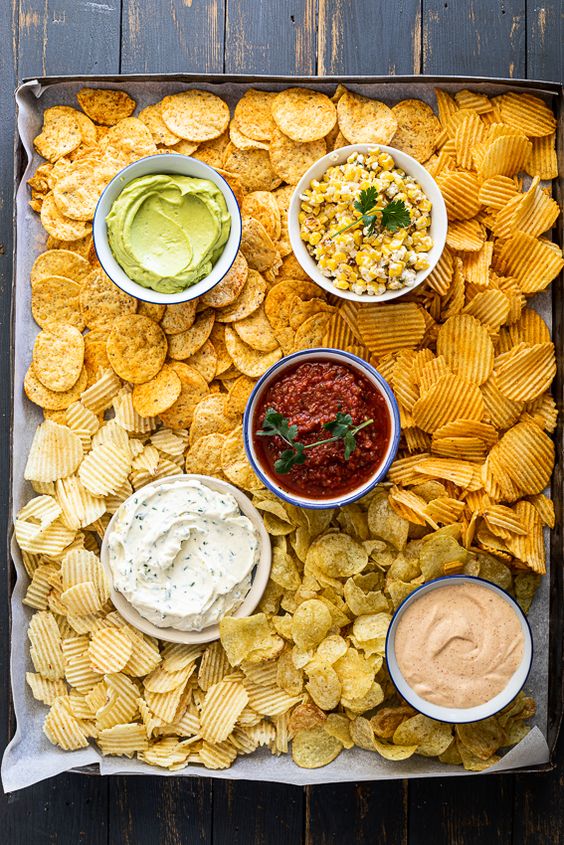Embarking on a weight loss journey can be both exciting and challenging. It requires dedication, commitment, and a willingness to step out of your comfort zone. If you’re looking for effective ways to kickstart your weight loss goals, incorporating challenges into your routine can be a fantastic strategy.

Challenges not only provide structure and motivation but also help you develop healthy habits that can last a lifetime. In this article, we present 15 diverse challenges that can assist you on your weight loss journey. From fitness and nutrition to mindful habits, these challenges are designed to push your boundaries and ignite positive change in your lifestyle. Are you ready to embrace the challenge and transform your body, one step at a time? Let’s dive in and discover the 15 challenges that can lead you to a healthier, fitter, and more vibrant version of yourself.
30-Day Fitness Challenge
Create a 30-day fitness challenge where you engage in a different workout every day. This could include activities like running, cycling, swimming, yoga, or strength training.

The 30-Day Fitness Challenge is a transformative journey designed to improve your overall fitness and help you achieve your weight loss goals. This challenge involves engaging in a different workout activity each day for a span of 30 days. Whether it’s cardio exercises, strength training, yoga, or other forms of physical activity, the challenge encourages you to explore a variety of workouts to keep your routine engaging and diverse.
By participating in the 30-Day Fitness Challenge, you can boost your cardiovascular health, increase muscle strength, enhance flexibility, and burn calories. This challenge not only helps you shed excess weight but also builds endurance and improves overall fitness levels. As you progress through the challenge, you may notice increased energy, improved body composition, and a sense of accomplishment. The 30-Day Fitness Challenge serves as a powerful catalyst for developing a consistent exercise habit that can have a lasting impact on your well-being.
Sugar-Free Challenge
Challenge yourself to eliminate added sugars from your diet for a specific period, such as two weeks or a month. Focus on consuming whole foods and natural sources of sugar instead.

The Sugar-Free Challenge is a commitment to eliminate added sugars from your diet for a specific period, typically ranging from a couple of weeks to a month. During this challenge, you focus on consuming whole, unprocessed foods and avoiding foods and beverages with added sugars, such as soda, candy, pastries, and sugary snacks. By removing added sugars from your diet, you can experience numerous benefits for your health and weight loss journey.
This challenge helps stabilize blood sugar levels, reduce cravings, and promote better insulin sensitivity. It can also lead to improved energy levels, clearer skin, and better dental health. By relying on natural sources of sweetness, such as fruits and vegetables, you can still satisfy your taste buds while nourishing your body with essential nutrients. The Sugar-Free Challenge serves as an opportunity to become more mindful of your sugar intake, make healthier food choices, and develop long-term habits that support your overall well-being.
Portion Control Challenge
Practice portion control by measuring your food and reducing portion sizes for a set period. Use measuring cups or a food scale to ensure you’re eating appropriate serving sizes.

The Portion Control Challenge is a focused effort to manage and reduce the sizes of your food portions. It involves consciously controlling the amount of food you consume during meals and snacks, aiming to eat appropriate serving sizes that align with your weight loss goals. By participating in this challenge, you develop a better understanding of portion sizes and learn to listen to your body’s hunger and fullness cues.
During the Portion Control Challenge, you may use measuring cups, a food scale, or other tools to accurately portion out your meals. This allows you to be mindful of the quantity of food you consume and avoid overeating. By practicing portion control, you can create a calorie deficit, which is essential for weight loss.
This challenge helps you develop a healthier relationship with food and promotes mindful eating habits. It encourages you to savor each bite, focus on the quality of your meals, and pay attention to the nutritional value of the foods you choose. Over time, portion control can become a natural and sustainable habit that supports your weight loss journey and overall well-being.
Meal Prep Challenge
Commit to preparing your meals in advance for a specific duration, such as a week or two. This helps you have healthier options readily available and reduces the temptation to eat out or choose unhealthy foods.

The Meal Prep Challenge involves dedicating a specific period, such as a week or two, to preparing your meals in advance. This challenge aims to streamline your eating habits, improve the quality of your meals, and support your weight loss goals.
During the Meal Prep Challenge, you set aside a designated time to plan and prepare your meals for the upcoming days. This includes selecting nutritious recipes, shopping for ingredients, and cooking or assembling your meals in advance. By having pre-prepared meals readily available, you reduce the temptation to opt for unhealthy convenience foods or indulge in impulsive eating choices.
The Meal Prep Challenge offers several benefits. It helps you take control of your nutrition by ensuring that you have balanced, portion-controlled meals ready to go. You can incorporate a variety of healthy ingredients, such as lean proteins, whole grains, vegetables, and fruits, into your prepped meals, promoting a well-rounded diet. Moreover, meal prepping saves time and energy during busy days and reduces the likelihood of making unhealthy food choices when you’re feeling rushed or stressed.
By participating in the Meal Prep Challenge, you can cultivate better eating habits, improve your relationship with food, and make consistent progress towards your weight loss goals. It encourages organization, planning, and mindful choices, ultimately supporting a healthier lifestyle beyond the challenge itself.
Daily Steps Challenge
Aim to reach a specific step count each day, such as 10,000 steps. Use a pedometer or fitness tracker to monitor your progress and gradually increase your daily step goal over time.

he Daily Steps Challenge is a commitment to increasing your daily step count as a means of promoting weight loss and improving overall health and fitness. This challenge involves setting a specific step goal, such as 10,000 steps per day, and striving to achieve it consistently.
By participating in the Daily Steps Challenge, you incorporate more physical activity into your daily routine. Walking is a low-impact and accessible form of exercise that can be done almost anywhere. It helps burn calories, boost metabolism, and improve cardiovascular health.
To track your steps, you can use a pedometer, fitness tracker, or smartphone app. These tools provide valuable insights into your activity levels, allowing you to monitor your progress and gradually increase your daily step goal over time.
The Daily Steps Challenge encourages you to find opportunities throughout the day to be more active. This may involve taking the stairs instead of the elevator, parking your car farther away, or going for a walk during your lunch break. It promotes a more active lifestyle and helps combat sedentary behaviors.
Mindful Eating Challenge
Focus on mindful eating by paying attention to your body’s hunger and fullness cues. Avoid distractions while eating, savor each bite, and listen to your body’s signals to stop eating when you’re satisfied.

The Mindful Eating Challenge focuses on cultivating a deeper awareness and connection with your food and eating habits. This challenge encourages you to slow down, savor each bite, and pay attention to your body’s hunger and fullness cues.
During the Mindful Eating Challenge, you practice being fully present and engaged during meals. This involves removing distractions such as phones, computers, or television and creating a calm environment for eating. By doing so, you can fully appreciate the flavors, textures, and aromas of your food.
The challenge promotes a non-judgmental attitude towards eating and encourages you to listen to your body’s signals. It involves eating when you’re truly hungry and stopping when you’re comfortably satisfied, rather than mindlessly consuming food.
Practicing mindful eating can have several benefits for weight loss and overall well-being. By slowing down and savoring each bite, you become more attuned to your body’s satiety signals, which can help prevent overeating. It also allows you to appreciate and enjoy your food more, leading to a more satisfying eating experience.
The Mindful Eating Challenge encourages you to become aware of emotional and external triggers that may lead to mindless eating. By identifying these triggers, you can develop strategies to address them and make conscious choices about your food intake.
By participating in the Mindful Eating Challenge, you develop a healthier and more balanced relationship with food. It promotes self-awareness, mindful decision-making, and a deeper appreciation for the nourishment your meals provide. Ultimately, this challenge can help you make more conscious food choices and support your weight loss efforts.
No Fast Food Challenge
Challenge yourself to avoid fast food or takeout meals for a set period. Opt for homemade, nutritious meals instead, and explore healthier alternatives to your favorite fast-food options.

The No Fast Food Challenge is a commitment to eliminating fast food and takeout meals from your diet for a set period. This challenge encourages you to prioritize homemade, nutritious meals and opt for healthier alternatives to fast food options.
During the No Fast Food Challenge, you avoid consuming food from fast food restaurants or ordering takeout meals. Instead, you focus on preparing your own meals using fresh, whole ingredients. This allows you to have more control over the nutritional content of your food and make choices that align with your weight loss goals.
The challenge promotes healthier eating habits by encouraging you to choose nutrient-dense foods, such as lean proteins, whole grains, fruits, and vegetables. It also helps reduce the intake of unhealthy additives, excessive sodium, and saturated fats commonly found in fast food.
By participating in the No Fast Food Challenge, you may discover new recipes, cooking techniques, and flavors as you explore homemade alternatives to your favorite fast food meals. You can experiment with healthier versions of burgers, wraps, salads, or even recreate your own versions of popular fast food dishes.
This challenge provides an opportunity to develop better habits around food preparation, meal planning, and mindful eating. It can help you break the cycle of relying on fast food as a convenient option and foster a greater appreciation for nourishing your body with wholesome, home-cooked meals.
By successfully completing the No Fast Food Challenge, you not only support your weight loss journey but also establish a foundation for healthier eating habits in the long term. It encourages you to make conscious food choices, prioritize nutrition, and take control of your overall well-being.
HIIT (High-Intensity Interval Training) Challenge
Incorporate high-intensity interval training into your workouts. Perform short bursts of intense exercise followed by brief periods of rest. This type of training can help burn calories and boost metabolism.

The HIIT (High-Intensity Interval Training) Challenge is a fitness challenge that involves incorporating high-intensity interval training into your workout routine. HIIT workouts consist of short bursts of intense exercise followed by brief periods of rest or active recovery.
During the HIIT Challenge, you commit to performing HIIT workouts regularly, aiming to push your limits and elevate your heart rate during each session. These workouts can include a variety of exercises such as sprinting, burpees, jump squats, high knees, or mountain climbers.
The challenge is designed to maximize calorie burn, boost metabolism, and improve cardiovascular fitness. HIIT workouts are known to be highly effective in a shorter amount of time compared to steady-state cardio exercises. This makes them a great option for those with busy schedules who still want to achieve weight loss and fitness goals.
HIIT workouts not only help burn calories during the exercise session but also create an “afterburn effect,” where your body continues to burn calories at an elevated rate even after the workout is complete. This can contribute to weight loss and improved overall fitness.
21-Day Water Challenge
Drink an adequate amount of water every day for 21 consecutive days. Aim for at least eight glasses of water (64 ounces) per day to stay hydrated and promote weight loss.

The 21-Day Water Challenge is a commitment to prioritize and increase your water intake for a period of 21 consecutive days. This challenge focuses on the importance of proper hydration and its positive impact on overall health and weight loss.
During the Water Challenge, the goal is to drink an adequate amount of water every day. The general guideline is to aim for at least eight glasses of water, which is equivalent to 64 ounces or about 2 liters. However, individual water needs may vary depending on factors such as age, weight, activity level, and climate.
Proper hydration is crucial for many bodily functions, including digestion, nutrient absorption, temperature regulation, and joint lubrication. Drinking enough water can also help control appetite, support metabolism, and promote healthy skin.
To make the Water Challenge more engaging, you can track your water intake using a water bottle with volume markings or a smartphone app. This allows you to monitor your progress and ensure you’re meeting your daily water goals.
No-Snacking Challenge
Challenge yourself to eliminate snacking between meals for a certain duration. Stick to three balanced meals a day and avoid mindless eating.

During the No-Snacking Challenge, the goal is to eliminate any non-essential snacking between meals. Instead, focus on having balanced, satisfying meals that provide adequate nutrition and keep you comfortably full until your next mealtime.
Snacking can often lead to mindless eating, where we consume excess calories without truly realizing it. By cutting out unnecessary snacks, you become more conscious of what and when you eat, helping you develop a healthier relationship with food.
To succeed in the challenge, plan and prepare well-rounded meals that incorporate lean proteins, whole grains, fruits, vegetables, and healthy fats. This way, you provide your body with the necessary nutrients to sustain you between meals.
During the challenge, it’s crucial to listen to your body’s hunger and fullness cues. If you’re genuinely hungry between meals, opt for a nutritious snack like a piece of fruit, a handful of nuts, or a small serving of yogurt.
Fitness Class Challenge
Sign up for a fitness class or program that interests you, such as dance, kickboxing, spin, or Zumba. Commit to attending the classes regularly for a specific duration, challenging yourself to push harder each time.

The Fitness Class Challenge is an opportunity to step out of your comfort zone and try a variety of fitness classes to improve your physical fitness and have fun along the way. This challenge involves participating in different types of group exercise classes, such as Zumba, kickboxing, yoga, cycling, or HIIT.
During the Fitness Class Challenge, you can explore different fitness studios, community centers, or even virtual classes to discover activities that you enjoy and that suit your fitness goals. The challenge encourages you to push your limits, try new workouts, and engage in a supportive and motivating group environment.
Participating in fitness classes offers numerous benefits. It helps improve cardiovascular health, build strength, enhance flexibility, and increase overall endurance. Additionally, attending fitness classes can provide a sense of community and camaraderie, making exercise more enjoyable and encouraging long-term adherence to a fitness routine.
By embracing the Fitness Class Challenge, you can diversify your workouts, prevent boredom, and challenge your body in different ways. Each class offers a unique experience, allowing you to target different muscle groups, improve your coordination, and explore different fitness modalities.
Vegetarian or Vegan Challenge
Try following a vegetarian or vegan diet for a set period, such as a month. Focus on incorporating plant-based foods into your meals and exploring new recipes and flavors.

The Vegetarian or Vegan Challenge invites you to explore the world of plant-based eating by adopting a vegetarian or vegan diet for a set period of time. Whether you choose to eliminate meat and poultry (vegetarian) or all animal products, including meat, dairy, and eggs (vegan), this challenge provides an opportunity to embrace a more plant-centric lifestyle and experience the many health and environmental benefits it offers.
During the Vegetarian or Vegan Challenge, you’ll focus on consuming a variety of fruits, vegetables, whole grains, legumes, nuts, and seeds as the foundation of your meals. This shift toward plant-based eating can provide ample nutrients, fiber, and antioxidants while reducing the intake of saturated fats and cholesterol found in animal products. It may also help lower the risk of certain chronic diseases, promote weight loss, and improve digestion.
By taking part in this challenge, you’ll discover new flavors, experiment with plant-based recipes, and develop a greater appreciation for the versatility of vegetarian or vegan cuisine. It’s an opportunity to explore different sources of plant protein, such as tofu, tempeh, lentils, and chickpeas, and incorporate a variety of colorful fruits and vegetables into your meals.
Intermittent Fasting Challenge
Experiment with intermittent fasting by restricting your eating window to a specific timeframe each day. Common approaches include the 16:8 method (fasting for 16 hours and eating within an 8-hour window) or alternate-day fasting.

The Intermittent Fasting Challenge involves incorporating intermittent fasting into your eating routine for a designated period. Intermittent fasting is an eating pattern that alternates between periods of fasting and eating within a specific time window.
During the challenge, you can choose a fasting protocol that suits your lifestyle. Popular methods include the 16/8 method (16 hours of fasting, followed by an 8-hour eating window), the 5:2 method (eating normally for 5 days and restricting calorie intake for 2 non-consecutive days), or alternate-day fasting (alternating between fasting days and regular eating days).
Intermittent fasting can offer several potential benefits, including weight loss, improved insulin sensitivity, increased cellular repair, and reduced inflammation. By limiting the duration of your eating window, you may naturally consume fewer calories, which can support weight loss efforts.
During the fasting periods, it’s important to stay hydrated by drinking water, herbal tea, or other non-caloric beverages. When it’s time to break your fast, focus on consuming balanced meals that provide essential nutrients, including lean proteins, whole grains, fruits, vegetables, and healthy fats.
Stair Climbing Challenge
Challenge yourself to take the stairs instead of elevators or escalators whenever possible. Set a daily or weekly goal for the number of flights of stairs you’ll climb, gradually increasing it as you progress.

The Stair Climbing Challenge is a fitness challenge that involves incorporating stair climbing into your daily routine to improve your cardiovascular fitness, build lower body strength, and burn calories. This challenge encourages you to make the most of the stairs in your environment, whether it’s at home, work, or public places.
During the Stair Climbing Challenge, the goal is to incorporate stair climbing as a regular form of exercise. Instead of taking elevators or escalators, opt for the stairs whenever possible. This simple change can have a significant impact on your fitness level.
Stair climbing is a highly effective cardiovascular workout that engages multiple muscle groups, including your legs, glutes, and core. It can help improve your endurance, increase your heart rate, and boost your overall stamina. Plus, it’s a weight-bearing exercise, which is beneficial for maintaining bone density.
To make the Stair Climbing Challenge more engaging, you can set specific goals, such as climbing a certain number of flights of stairs per day or increasing the intensity and duration of your stair workouts over time. You can also track your progress using a fitness tracker or smartphone app to monitor the number of steps or flights climbed.
Outdoor Challenge
Embrace outdoor activities and explore nature while burning calories. This could involve hiking, trail running, kayaking, or cycling. Set a goal to engage in outdoor activities a certain number of times per weekEmbrace outdoor activities and explore nature while burning calories. This could involve hiking, trail running, kayaking, or cycling. Set a goal to engage in outdoor activities a certain number of times per week.

The Outdoor Challenge is an exciting opportunity to embrace the great outdoors and engage in various physical activities while enjoying nature’s beauty. This challenge encourages you to step outside, breathe in the fresh air, and explore the wide range of outdoor activities available to you.
During the Outdoor Challenge, you have the freedom to choose from a plethora of outdoor activities that suit your interests and fitness level. Whether it’s hiking, cycling, running, swimming, kayaking, or even playing a sport like soccer or basketball, the options are endless. The key is to find activities that you genuinely enjoy, as it will make the challenge more enjoyable and sustainable.
Engaging in outdoor activities offers numerous benefits for both your physical and mental well-being. It allows you to soak up Vitamin D from the sun, which is essential for bone health and boosting mood. Outdoor activities also provide an opportunity for cardiovascular exercise, muscle strengthening, and improved overall fitness.


